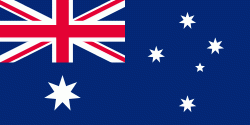Cadoux (Cadoux)
Cadoux is a town in the northeastern Wheatbelt region of Western Australia. It is about 180 km northeast of Perth, within the Shire of Wongan-Ballidu.
The townsite was gazetted in 1929 and the railway siding was opened in the same year. It was on the Amery–Kalannie line at 149 miles 49 chains.
The main industry in town is wheat farming with the town being a Cooperative Bulk Handling receival site.
Cadoux, and neighbouring Burakin to the north, are considered unusually seismically active for Australia, with minor earthquakes reported on an annual basis. Notable events include in 2001 (Burakin swarm) and in 2022.
The most significant event, however, was on 2 June 1979 with a significant earthquake just east of the town. It had a Richter magnitude of 6.1 and was the second most damaging earthquake in the history of Western Australia. Damage to the area was estimated to be A$3.8 million (in 1979 dollars). Only one injury was recorded in the entire earthquake−a broken arm sustained by a child from falling masonry.
The townsite was gazetted in 1929 and the railway siding was opened in the same year. It was on the Amery–Kalannie line at 149 miles 49 chains.
The main industry in town is wheat farming with the town being a Cooperative Bulk Handling receival site.
Cadoux, and neighbouring Burakin to the north, are considered unusually seismically active for Australia, with minor earthquakes reported on an annual basis. Notable events include in 2001 (Burakin swarm) and in 2022.
The most significant event, however, was on 2 June 1979 with a significant earthquake just east of the town. It had a Richter magnitude of 6.1 and was the second most damaging earthquake in the history of Western Australia. Damage to the area was estimated to be A$3.8 million (in 1979 dollars). Only one injury was recorded in the entire earthquake−a broken arm sustained by a child from falling masonry.
Map - Cadoux (Cadoux)
Map
Country - Australia
 |
 |
| Flag of Australia | |
The ancestors of Aboriginal Australians began arriving from south east Asia approximately 65,000 years ago, during the last ice age. Arriving by sea, they settled the continent and had formed approximately 250 distinct language groups by the time of European settlement, maintaining some of the longest known continuing artistic and religious traditions in the world. Australia's written history commenced with the European maritime exploration of Australia. The Dutch navigator Willem Janszoon was the first known European to reach Australia, in 1606. In 1770, the British explorer James Cook mapped and claimed the east coast of Australia for Great Britain, and the First Fleet of British ships arrived at Sydney in 1788 to establish the penal colony of New South Wales. The European population grew in subsequent decades, and by the end of the 1850s gold rush, most of the continent had been explored by European settlers and an additional five self-governing British colonies established. Democratic parliaments were gradually established through the 19th century, culminating with a vote for the federation of the six colonies and foundation of the Commonwealth of Australia on 1 January 1901. Australia has since maintained a stable liberal democratic political system and wealthy market economy.
Currency / Language
| ISO | Currency | Symbol | Significant figures |
|---|---|---|---|
| AUD | Australian dollar | $ | 2 |
| ISO | Language |
|---|---|
| EN | English language |















